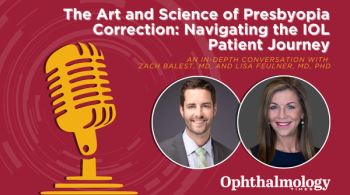
Anti-inflammatory for cataract surgery reaches phase III endpoints
Preliminary phase III results were released for bromfenac ophthalmic solution 0.09% (Xibrom, ISTA Pharmaceuticals), meant to treat the inflammation and pain following cataract surgery.
Irvine, CA-Preliminary phase III results were released for bromfenac ophthalmic solution 0.09% (Xibrom, ISTA Pharmaceuticals), meant to treat the inflammation and pain following cataract surgery. The solution achieved statistical significance in the study’s primary endpoint, the absence of ocular inflammation 15 days after cataract surgery, and the secondary endpoint, the elimination of pain 1day post surgery, according to the company.
The confirmatory phase III study was a multicenter, randomized, double-masked, parallel-group study in 299 patients who underwent cataract surgery in one eye. Patients were assigned randomly (1:1) to receive either the bromfenac ophthalmic solution 0.09% once daily or placebo. Dosing began 1 day before cataract surgery and continued for 14 days following surgery.
Ocular inflammation was evaluated using a summed ocular inflammation score (SOIS) and measured by an assessment of immune cells in the anterior chamber of the eye and cellular debris. The secondary efficacy endpoint was evaluated via a pain score from the ocular comfort grading assessment recorded in a diary. At each office visit patients also graded their symptoms, which included photophobia, the chief symptomatic complaint following cataract surgery.
Based on the integrated results of two, phase III studies with the solution, announced in December 2008, the FDA required ISTA to conduct an additional confirmatory study. Once the company completes its analysis of the full dataset, ISTA expects to file a supplemental new drug application seeking approval of the bromfenac 0.09% formulation with the FDA prior to the end of 2009.
Newsletter
Don’t miss out—get Ophthalmology Times updates on the latest clinical advancements and expert interviews, straight to your inbox.
















































.png)


